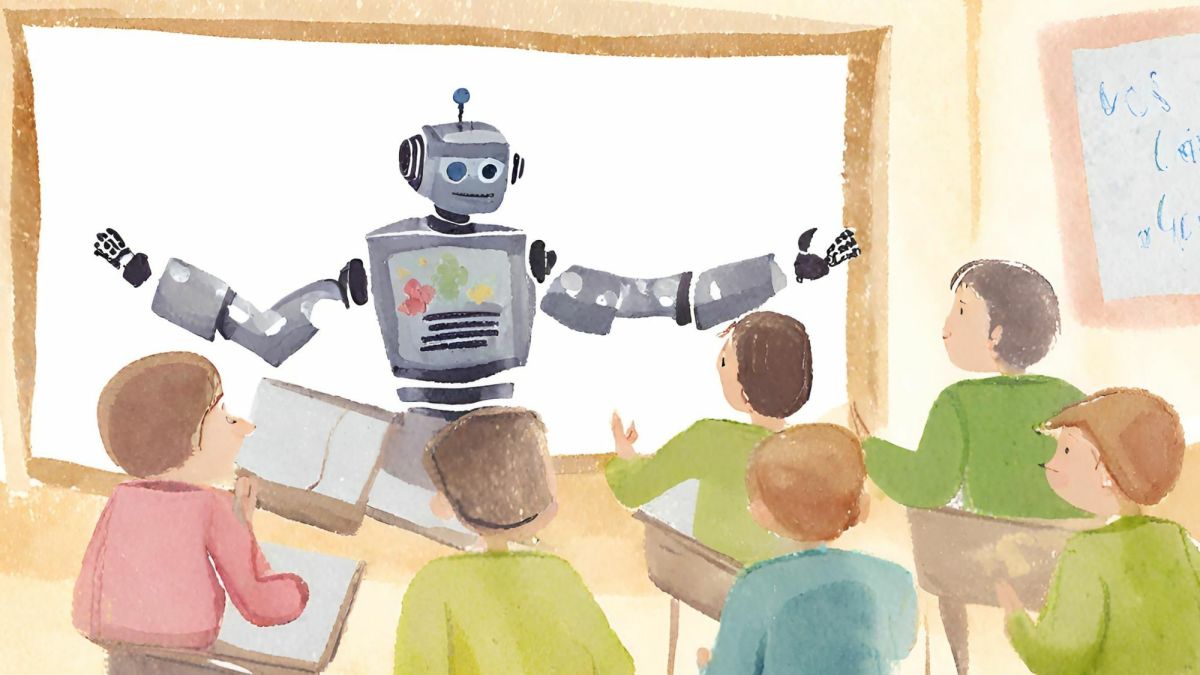IoT in Pakistan
- INTRODUCTION
1.1 Information and Communication Technology
Information and Communication Technology (ICT) refers to the computers, internet, and the electronic data communication system, and is being used globally in every sector of the world, like the economy, education, health, science & technology, agriculture, defense, etc. The Internet has reduced the geographical gaps and the world has become the global village. Now every piece of information is in your figure tips and just away from a single click. Even in various cases, we do not need to click, we just give instructions in our voice, and the task will be accomplished. We can share any information with the world using various channels through ICT. We use websites, online social networks like Facebook, Twitter, Instagram, blogs, youtube channels, etc to share our statuses or information to make the world-known. We can also watch live coverage of the events and occasions without being a part of that. ICT has changed the concept of the learning environment. Now online courses are offered to make us experts in any field. We are supposed to be enrolled on the website for a particular course instead of an academy or institution. This facilitates to those, who do not have much time to attend classes physically, or unable to join school or academy due to any other reason. On the other hand, smart offices or mobile office is also a remarkable concept given by ICT. If you have a laptop and internet connection, you can start your office anywhere. Either you are in travel or you are in bed, you can start your office. Similarly, ICT is going to convert the whole world to the paperless environment, where no need to have a printed document. Whatever the information we need, is available in soft copy over the internet. Even currently, we enjoy paperless money, online exams, emails instead of traditional letters on paper, digital books and libraries, PDAs, etc. Surveillance is now being done through ICT. Now we can say that it is an essential ingredient of every sector to share information instantly from one point to another to keep updated in all aspects so that the right decisions may be taken as per the shared information. This shows that the implementation/adoption of ICT is now unavoidable for every country, sector, or segment. But when we talk about the adoption of ICT, we must keep in mind that it is not much easy especially in under developing countries comparatively developed countries. This requires the complete infrastructure, which includes both human and non-human resources. To implement ICT in under developing countries, different challenges and issues are supposed to be faced and managed. These challenges may vary according to culture, economy, political strength, geographic positions, climate, etc. In this paper, I will be focused on Pakistan and the education system of Pakistan to depict that what are the issues and challenges, which are being faced in implementing ICT in the education system of Pakistan.
1.2 Advantages of ICT in Education
There are many advantages of ICT especially in education, which are extolled by various researchers. Some of them are hereby listed below.
1.2.1 Access of digital information in an effective and efficient manner
ICT as a tool is being used to find the learning topics for the students. It is also used to solve problems and discover multiple solutions to such problems, which makes the learning process easier for the students [1]. ICT engages the students in accessing knowledge and makes this knowledge understood in different ways, which is more convenient for the students.
1.2.2 Support self-directed and student-centered learning
Computers are now frequently used by the students to engage them in their studies [2]. They create fresh knowledge by accessing data and information. Then they select the data as per their need and organize it for interpreting the theme of that knowledge. With the help of ICT, the students have become more competent to collect data and information from different sources and accessing it more critically to assess the quality of learning material.
1.2.3 Create a productive learning environment
ICT has evolved the new comprehension level for students in various learning areas [3]. ICT is producing more dynamic explanations for various kinds of problems. For instance, if we talk about reading class, where students are supposed to read books, digital books are being used for reading activities. Students can use different types of textbooks from the initial level to a professional level with the help of computers, tablets PCs, PDAs, iPods, etc. Many digital books for reading activity also contain reading applications. These applications provide a reading interface, games that help the students to enhance their reading skills, vocabulary enhancing activities, and much more. It shows that ICT provides special-purpose applications, which gives the new methods to enhance learning capabilities as per needs.
1.2.4 Support in distance learning educational
ICT has enabled the students to share, communicate, and work together anytime and anywhere [4]. For example, a class on teleconference invites the students all around the globe together at the same time for any collaborative discussion. This will make them able to assess the problems, find the proposals, and to build up the concepts. Then they can evaluate the solutions with the help of other peers by using ICT. In this practice, they not only get the knowledge but also exchange different learning experiences with others to show their assessment level and learning capabilities, which may result to learn from others’ experiences and enhance expertise in the domain as well. It also helps to meet some other researchers in the same field, who can share their research findings to make the beginners aware with the latest work and also the gaps in the domain.
1.2.5 Facilitate to develop critical thinking skills
Keeping in view the concept of new approaches like constructive learning, ICT facilitates the students to be focused on broader concepts instead of small tasks [5]. Statistics show that there is a correlation between critical thinking development and the study based on ICT [6]. The critical thinking may be developed because of ICT, as it enhances the process thinking development and gives huge exposure. That’s why, it is recommended to adopt ICT in schools, colleges, universities, and institutions in every area ops study for better learning. Those institutions, which have implemented ICT, are more result-oriented and the students of such institutions are better in terms of critical thinking.
1.2.6 Enhance the quality of learning and teaching
There are (03) three key characteristics, which are required to produce the best learning and quality teaching by using ICT. 1. Autonomy, 2. Capability and 3. Creativity [7]. In autonomy, students improve their learning by using ICT. By this, the students become more capable, as they work by themselves and also work with teams all around the world. After implementing ICT, most of the time, teachers assign some tasks to the students to accomplish with peers or groups to make the students ready to work in groups and teams for their professional exposure. By using ICT, collaborative learning gives the students new opportunities to establish new knowledge. Similarly, it gives more confidence to the students to enjoy risks and gain knowledge from their lapses. On the other hand, the educators/teachers design the teaching material on their own by using ICT. It gives them complete control over the course contents, which is not possible in the traditional class [8]. Capability refers to the students’ ability to implement and transfer the knowledge to others in effective and efficient manners with the help of ICT. For instance, students are being asked to carry out the practice of pronunciation in a language class and it requires an online dictionary, which also produces audio to make the pronunciation better. This dictionary will not only help them to make their pronunciation better but also the meaning and definition as well. To play/use this kind of dictionary, the students must be aware that which internet browser is needed to play that dictionary properly. On the other hand, they have to select the best dictionary among hundreds of online dictionaries to fulfill their requirements. Similarly, they also need software, which can record their voice to listen to their pronunciations so that it can be improved and it also needs the best recording software. In the whole, it is a complete full of knowledge activity, which enhances the capability of a student in different dimensions. The creativity of the students may be enhanced by the help of ICT, as ICT provides new tools of multimedia, games, smart LEDs, etc, which helps to enhance the creativity of the users in different manners [9,10]. If we generalize the whole scenario, then we can say that these three characteristics enhance the learning and teaching capabilities and quality.
1.2.7 Facilitate the teacher by giving access to the course content
It is observed that the teachers can play their role to integrate the technology by using ICT in learning phenomena [11]. If the teachers are supported by the institution in terms of resources, infrastructure, technological support, and the confidence from management to develop the ICT class, then the class will be more appropriate for learning. In this situation, teachers will be held responsible for modifying the course contents to fulfill the new requirements, which will help the students to learn things in a better way.
We can sum up with the opinion that ICT has created a boom in the students’ learning and now they are not limited to the course contents, but they explore and think beyond the limits to get more and more knowledge and exposure [12]. ICT has created a new dimension under the relationship between learning and teaching.
The findings [12] shows that ICT has changed the entire way of traditional teaching methods. Now teachers use new methodologies to make their students more knowledgeable by using ICT. They design new assignments for the student to give them a variety of exposure to the real world natural phenomenon, which helps the students to get the idea clearer regarding the field of study. Especially, when we talk about higher education, where students are supposed to go for research work or novelty in already existing areas of studies, then ICT enables them to have collaborative efforts all around the world. They meet the researcher of the same field to get more clarity and possible solutions. This also helps them to share their problems with other experts by using ICT.
Though ICT has various advantages and proved its importance in every field of life especially in education, it is not much easy to implement ICT everywhere because of various challenges, which are discussed next section.
- 2. Challenges related to ICT in Education
As discussed in the previous section that there are lots of advantages of ICT especially in education, some of the challenges, which are associated with ICT, are being faced while implementing or adopting it. Frederick [13] in his research depicts that the main challenges, which are allied with ICT are special needs, mobility, and anxiety due to standardized test results. Looking for the solution of such challenges, Whelan [14] found that a more authentic problem-based and group-based learning environment will cope with this challenge. He also pointed out some other challenges, which are associated with students. Such as lack of technical skills, which will create a big hurdle to access ICT in-class environment. Lack of technical assistance, No feedback in time, lack of interaction with other students, and teachers are some other challenges [14]. That’s why; the author suggested some strategies, which will be helpful to cope with such challenges and will make a smooth learning process. The suggestions are orientation, training, and induction for the students. He also emphasized on the significance of instructor availability and better administration. He also focused on online conferencing facilities and podcasting [14]. In general, he talked about infrastructure, capacity building, policy, curriculum development, and government support to minimize the challenges and to enhance the usefulness of ICT in education. Similarly, another way to cope with such challenges is to improve technical skills, which can help in learning at ICT platforms [15].
If we look in a broader sense, than challenges does not only belong to the students but also associated with teachers as well and discussed in the literature. Such challenges include:
• Emphasis on technical skills instead of course contents [23]
• Extra burden to make the results better at the national level [18];
• Lack of encouragement and recognition from the management for effective and timely usage of ICT [24]
• Lack of training and development practices for ICT [25]
• Technical issues related to classroom [25]
• Huge number of students in the class [24]
• Lack of financial and technical assistance [18];
• Lack of possible promotions for ICT adoption in classes [25]
• Lack in clarity of goals for using ICT in educational institutions [16];
• Lack of pedagogical support and instructor collaboration and also lack of appropriate cooperation from inexperienced teachers [17]
• Not enough time to integrate ICT or to be expert in new software during the class period [19]
• Not enough skills to manage technical and teaching materials [13]
• Lack of software expertise and habitual methods for conceptualizing that what, how and why students should be taught [20];
• Lack of experience and knowledge for using ICT in education [21]
• Lack of related technological knowledge and how to associate that knowledge with present pedagogical contents to assist students’ learning [22]
As the challenges were observed, the solution also proposed by the researchers to cope with them. Such strategies or solutions are covered in the literature. As per the literature, educational institutions are supposed to:
• Provide benefits to the instructors, who are available online to provide technological training to the teachers [13].
• Supplement the course contents to meet technological needs [20].
• Give space to the teachers so that they can design the course contents to meet the technological needs [21]
• Offer continuous, timely and result oriented training to enhance ICT skills, which will make the teacher able to manage class based on ICT [22]
• Support constructive attitudes regarding the importance of combining ICT into instruction [23]
• Impart technical training coupled with technology to enhance teachers’ capabilities in terms of technical skills, and provide technical assistance if required [16]
• Carry the collaborations with technological institutions, which will support the teachers to exchange efficient technological experiences and activities [17]
• Arrange workshops, which will help teachers to replicate the result-oriented methodologies for technological assembling into practice and reveal the problems related to it [19]
ICT should not be used just to help in teaching methodologies, but it should play its role more than that [24]. Teachers are not supposed to implement ICT just to help in the traditional methodology of teaching, but it should be adapted concerning a student-centered approach that how ICT will be used to combine the class activities to encourage students’ learning [24]. It emphasizes that a teacher is required to implement ICT to launch some artistic and productive methods and beneficial practices with result-oriented lessons [21,26]. It is also suggested that the teacher must be open-minded to integrate ICT in classes [2]. Teachers must improve their teaching skills to adopt new teaching methodologies by implementing new tools of technology to in support of teaching, but it is observed that teachers exercise ICT more often just for the preparation of their teaching material instead of upgrading their critical thinking [25]. Similarly, it is also found that teachers apply ICT just to support the present teaching methods but not with regards to the student-centered approach of learning [27]. As per the authors, it happens due to a lack of clearer objectives of using ICT. If the objectives are mentioned and described to the teachers, then it will be more beneficial to apply ICT to enhance the teaching mechanisms and approach will be student-centered. Further, it is found that the teachers at the initial level do not possess enough knowledge of ICT to use technology-based classes. Even they do not express suitable methods to integrate ICT within the course contents [1]. That’s why; it is recommended that proper training should be initiated to train the teachers at the initial level, which will help them to design their curriculum under the light of technological needs [28]. Similarly, it is also suggested that the researchers associated with ICT should produce the examples that how teachers achieve effective and result oriented technological integration to accomplish pedagogical requirements and how to fulfill them. This will help the teachers to cope up with their difficulties faced during their practice [29].
In supplement to al above challenges associated with students and teachers in accordance with the use of ICT, some other challenges also exist, which are related to management and ICT infrastructure. Such challenges are discussed in the literature, which includes:
• The management focuses on quantity instead of quality in terms of course contents and the exam scores instead of ICT usage [25].
• Lack of proper support from the administration for the better usage of ICT [23].
• The management focuses on the improvement of test scores, which diverts the concentration from ICT usage to involve students in critical thinking practices [20].
• Lacking in the selection of proper course content and programs [25].
• Lacking in establishing proper infrastructure for ICT, such as software, hardware, and materials [25].
To cope up with these challenges, the researcher recommended that management is supposed to provide the proper technological access [25]. On the other hand, the management should involve the teachers in planning and policymaking activities related to the implementation and usage of ICT in classes. Lim carried out a qualitative research to assess the efficient and inefficient ICT usage in educational institutions regarding the provision of solutions [23]. The findings of his research revealed that the establishment of a well-organized ICT based class depends upon the timely accessibility of ICT tools, the standardized educational rules and regulations, appropriate allocation of technical staff among teachers, students, and teaching assistants. He emphasized that by focusing on such elements, students will be engaged in the critical thinking process. The existing literature is reviewed to point out the key elements in order to make able the teachers either pre-service or in-service to implement ICT as an important pedagogical tool [17]. It was suggested that the management of educational institutions should ask the teachers to support the significant impact in terms of student-centered and technology-based instruction to enhance the exam results for standardized tests. For example, educational institutions can present opportunities for initial level teachers to study various types of models and example, which can be applied for students in real environment. Institutions are supposed to facilitate pre-service teachers in order to understand the problems, which are being faced by the teachers while using ICT in classes and design the best strategies to address such problems. It is mandatory to make the vision clear for using technology in order to get the best result by using technology to enhance the learning process. It is also an important factor that while designing a pedagogical model, it should be focused that there is a strong relationship between application and theory, which helps to overcome the problems and challenges which are being faced in technological integration [30]. It is also observed that detailed knowledge of using hardware and software related to ICT is an intrinsic ingredient for planning the curriculum using ICT [31]. Training and development for the staff and teachers are very important to support course contents using ICT.
This content is accurate and true to the best of the author’s knowledge and is not meant to substitute for formal and individualized advice from a qualified professional.








